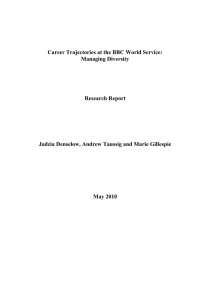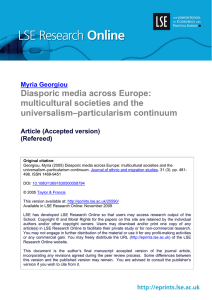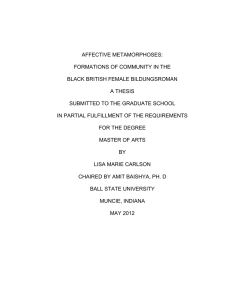Media Globalization: What are diasporic audiences? By Laura
advertisement
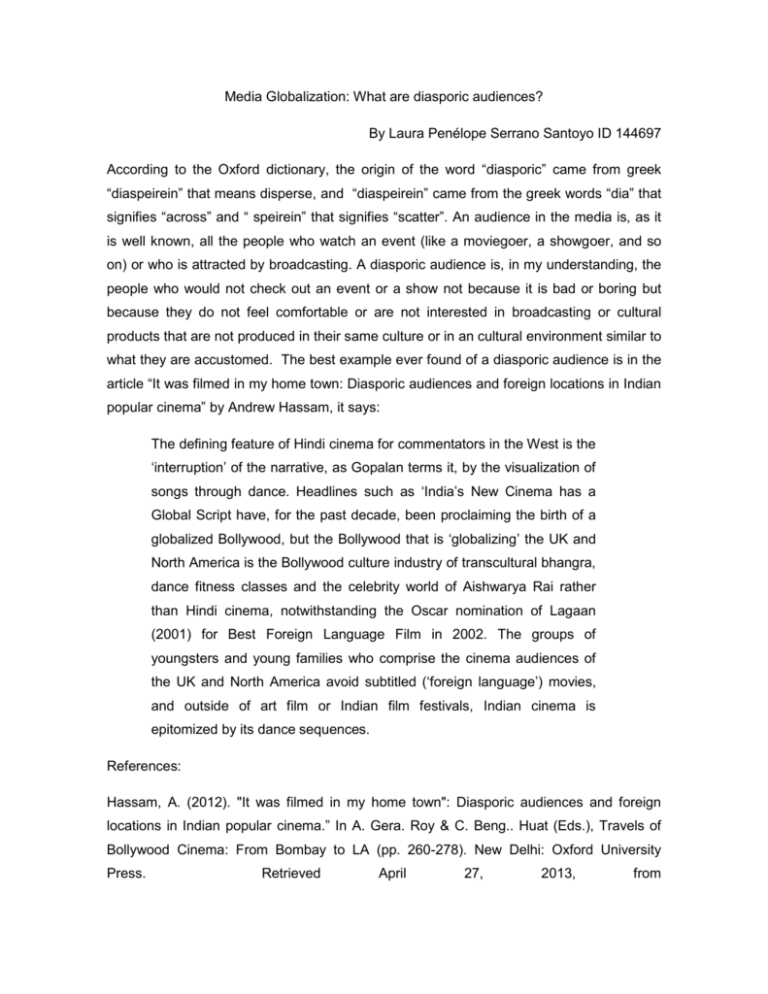
Media Globalization: What are diasporic audiences? By Laura Penélope Serrano Santoyo ID 144697 According to the Oxford dictionary, the origin of the word “diasporic” came from greek “diaspeirein” that means disperse, and “diaspeirein” came from the greek words “dia” that signifies “across” and “ speirein” that signifies “scatter”. An audience in the media is, as it is well known, all the people who watch an event (like a moviegoer, a showgoer, and so on) or who is attracted by broadcasting. A diasporic audience is, in my understanding, the people who would not check out an event or a show not because it is bad or boring but because they do not feel comfortable or are not interested in broadcasting or cultural products that are not produced in their same culture or in an cultural environment similar to what they are accustomed. The best example ever found of a diasporic audience is in the article “It was filmed in my home town: Diasporic audiences and foreign locations in Indian popular cinema” by Andrew Hassam, it says: The defining feature of Hindi cinema for commentators in the West is the ‘interruption’ of the narrative, as Gopalan terms it, by the visualization of songs through dance. Headlines such as ‘India’s New Cinema has a Global Script have, for the past decade, been proclaiming the birth of a globalized Bollywood, but the Bollywood that is ‘globalizing’ the UK and North America is the Bollywood culture industry of transcultural bhangra, dance fitness classes and the celebrity world of Aishwarya Rai rather than Hindi cinema, notwithstanding the Oscar nomination of Lagaan (2001) for Best Foreign Language Film in 2002. The groups of youngsters and young families who comprise the cinema audiences of the UK and North America avoid subtitled (‘foreign language’) movies, and outside of art film or Indian film festivals, Indian cinema is epitomized by its dance sequences. References: Hassam, A. (2012). "It was filmed in my home town": Diasporic audiences and foreign locations in Indian popular cinema.” In A. Gera. Roy & C. Beng.. Huat (Eds.), Travels of Bollywood Cinema: From Bombay to LA (pp. 260-278). New Delhi: Oxford University Press. Retrieved April 27, 2013, from http://www.google.com.mx/url?sa=t&rct=j&q=&esrc=s&source=web&cd=1&cad=rja&ved=0 CC4QFjAA&url=http%3A%2F%2Fro.uow.edu.au%2Fcgi%2Fviewcontent.cgi%3Farticle%3 D1316%26context%3Dlhapapers&ei=prJ8UZ3uB8Xn2QWOoGgDg&usg=AFQjCNHMdx_dAofuNxBZInX9g1YXeQZmsQ&sig2=nl9jrv78kNzt_U6YVS3x ig&bvm=bv.45645796,d.b2I
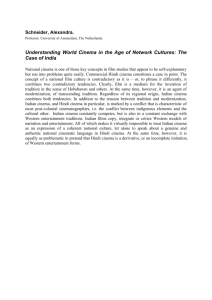



![[Lecture 4] from attractions to narrative integration 2012 for wiki](http://s2.studylib.net/store/data/005411128_1-612acd924ade64473e514356e531fdfd-300x300.png)
